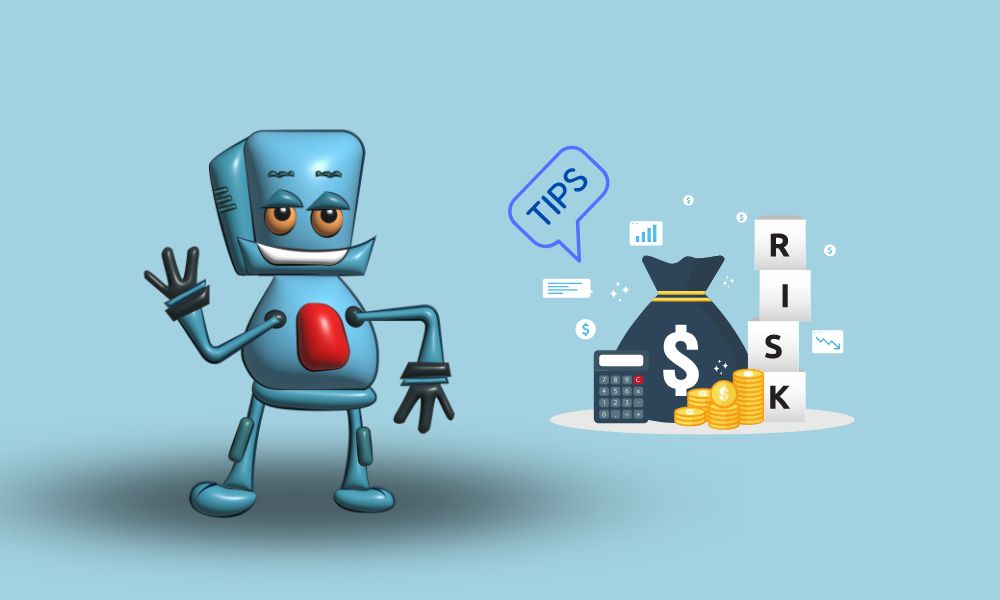
This is such an important topic, therefore I wanted to share it with you in the hopes of reaching as many people as possible. I hope it is useful.
I've seen several people crash their accounts extremely hard in recent years; they lost a lot of money, and for some, it was a nightmare!
It's difficult to watch these folks waste money and put his own family in financial jeopardy. That is why risk management in trading is critical in order to keep yourself and your life in balance.
Some may find it very useful, while others may recall these rules.
I'll make it a little shorter here, as in my book, but the important ideas are still covered!
I can't emphasize this enough: always follow your trading rules. Trading is not a means to make rich quick; it is a serious and difficult industry!
It takes a long time to learn, a lot of patience, and a lot of failures.
This failure is more crucial than your achievement! Failures, not successes, will reveal how it will not work.
But first, let's talk about risk management!
You must consider the risk of losing money with each investment, which is why it is essential to manage each investment with a solid risk/reward distribution.
You must keep in mind that the calculated risk/reward is simply theoretical and may produce completely different results.
However, with knowledge, you can dedicate a good entry for your trades to reduce your risk as low as possible.
Determine critical levels of support and resistance, and consider all possible scenarios and what you will do if you enter the red or green zone. Which levels provide the finest entry and exit points?
This will all help you determine your riks/reward ratio.
Before entering a deal, successful day traders are often aware of both the potential risk and the potential gain.
A day trader's goal is to place trades where the possible gain outweighs the potential risk.
These transactions have a favorable risk/reward ratio.
A risk/reward ratio is simply the amount of money you intend to risk vs the amount of money you anticipate you can gain.
For example, if you believe a potential transaction will result in either a $400 profit or a $100 loss, the trade has a risk/reward ratio of 1:4, making it a good setup.
In contrast, if you risk $100 to make $100, the deal has a risk/reward ratio of 1:1, providing you the same type of unfavorable odds as you would find in a casino.
As previously said, selecting trades with high risk/reward ratios (1:2 or greater) can help you maintain higher average profits and lower average losses, making your trading technique more sustainable.
Traders generally recommend a minimum 1:2 ratio distribution. In truth, whether you conduct your technical chart analysis or financial stock analysis, you will often find even better ratios.
We must set our stop loss just below our support or other significant levels that we have previously defined.
The goal is to cut losses before they get too large. Stopping out of a lost trade can be one of the most difficult things for traders to accomplish consistently.
Failure to take stops, on the other hand, can result in margin calls, needlessly high losses, and, ultimately, account blowouts.
To reduce your risk, I recommend considering your size before entering a position.
Overall, you should not put money at risk that you cannot afford to lose.
Smaller entries may be the most prudent strategy to protect your account. I believe this for four reasons:
1. You don't put too much of your money at risk, and your stop loss should be tight anyhow.
2. You can average down if the price is moving in the opposite way, but only if you are confident in your decision.
3. You can buy dips/pullbacks if the trend is solid and still headed in your chosen direction.
4. Your emotional control is stronger if the price movement is in the incorrect direction.
This brings us to the next topic.
Yes, large leverage will provide you enormous gains...but as a newbie, you won't have the experience to discern which trades have a lot of potentials or not.
Even skilled traders will only utilize a small portion of the fund to initiate a position.
If you utilize leverage, your losses can be much bigger. The problem is that if you lose money, your leverage will also reduce significantly, making it more difficult to recoup after each loss.
So, what is the answer to the issue, should you use leverage?
For beginners, we may easily respond: Get your hands on some massive leverage!
You can scarcely blow yourself up with that instrument. It will most likely take years to get back into the profit zone.
But you must save yourself, and after a period of time, a period of taking profits and cutting losses, you will gain information until you feel much more comfortable on the market and understand how trading truly works, at which point you can contemplate using leverage.
As I previously stated, I want to discuss only the most significant elements regarding this topic in a clear and understandable manner, because I believe many new investors are unaware of its importance!
Safe trading and learning!